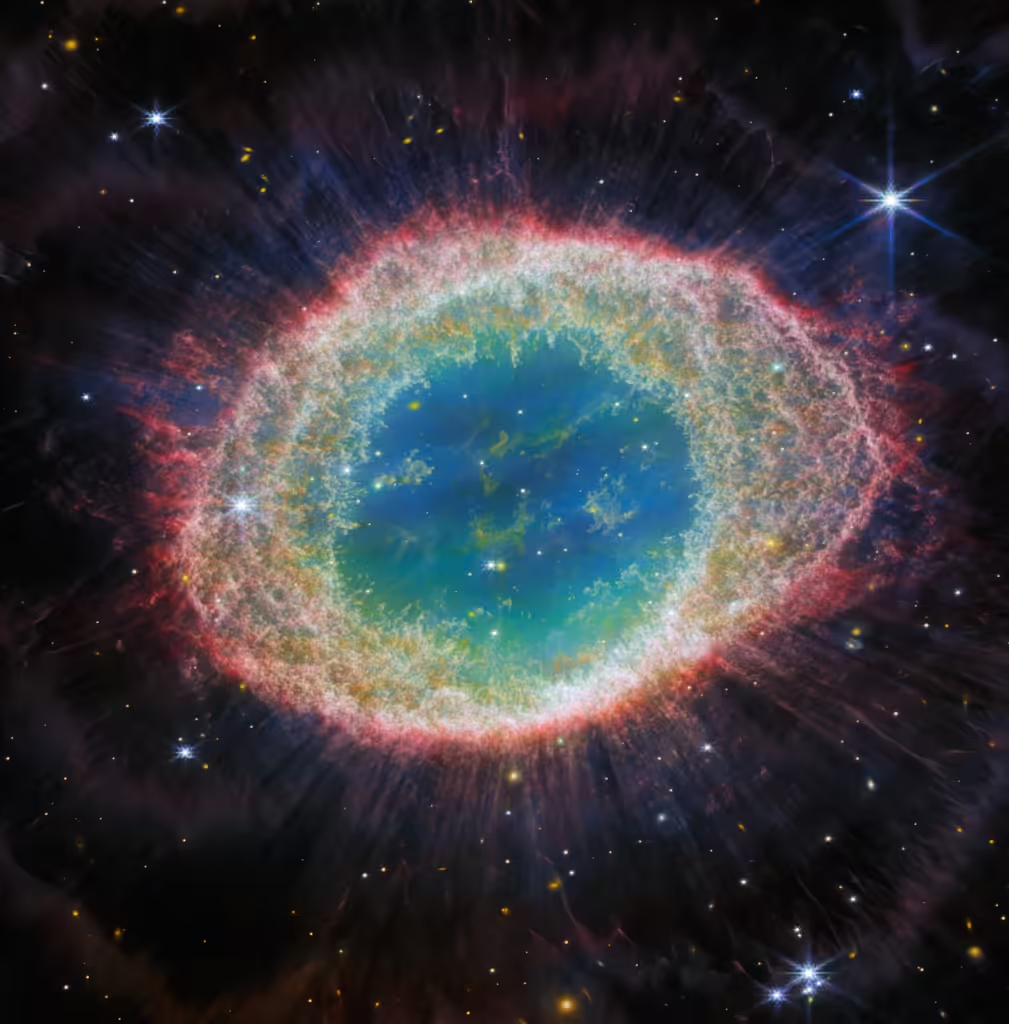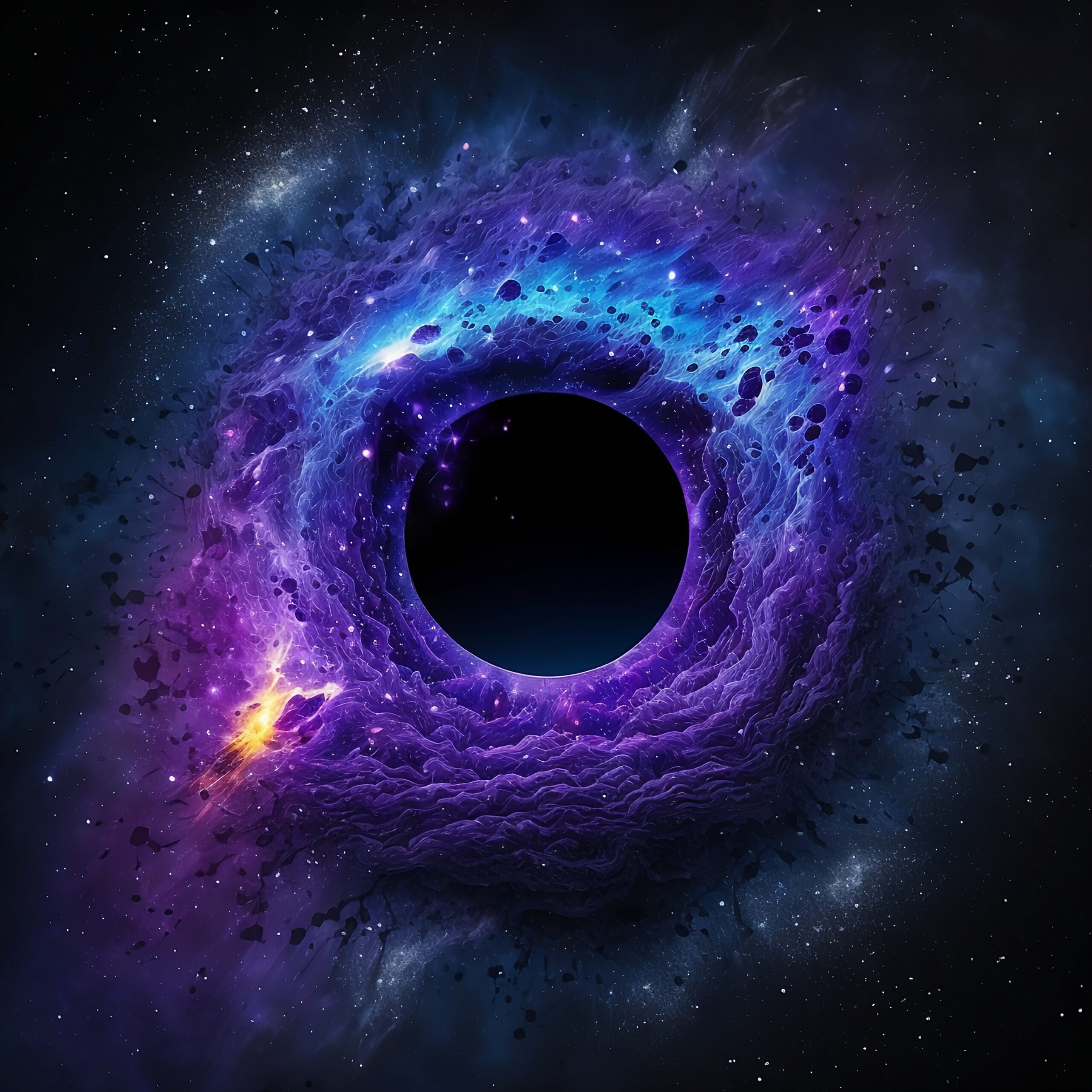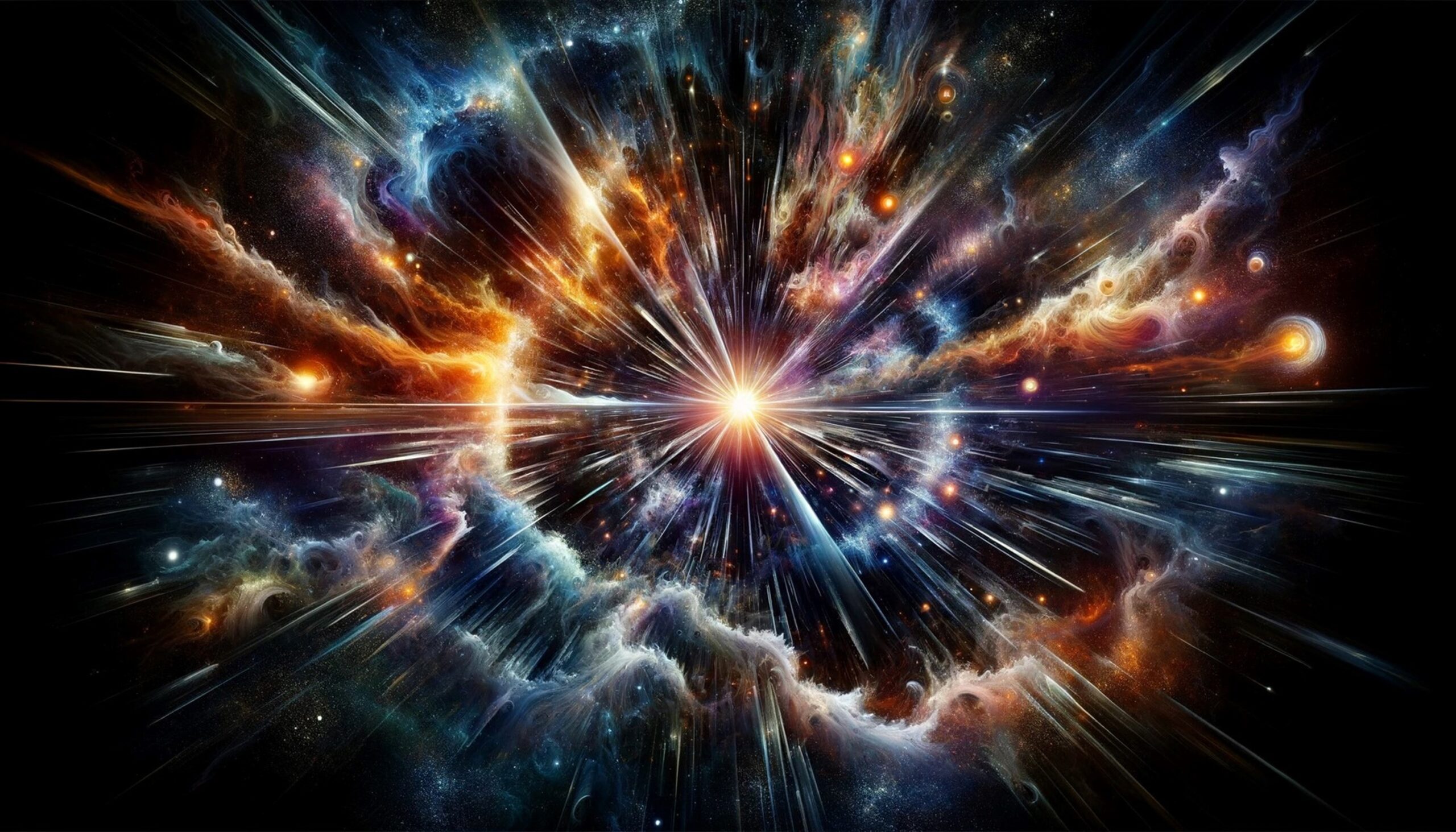Introduction to Nebulae
Nebulae are some of the most beautiful and fascinating objects in the universe. They often look like colorful clouds of gas and dust, with swirling shapes that capture our imagination. These massive clouds can stretch for hundreds of light-years in space. Astronomers take pictures of nebulae, showing them in bright colors like red, green, blue, and purple. The intricate patterns of nebulae make them one of the most recognizable images in both science and popular culture.
This leads to an interesting question: Are these colors real, and how do they form?
What Are Nebulae Made Of?
Nebulae are mainly made up of gases, dust, and other cosmic materials that shape their structure and appearance. The primary gases in nebulae are hydrogen and helium—the two lightest and most common elements in the universe. There are also small amounts of other elements like oxygen, carbon, nitrogen, and sulfur.
Here’s how each component affects a nebula’s properties and colors:
Gases (Hydrogen and Helium):
Hydrogen is the most common element in nebulae and plays a key role in the colors we see. When hydrogen atoms are energized by nearby stars, they emit a specific red light through hydrogen-alpha emission. This red glow is typical in emission nebulae. Helium doesn’t produce as much color but contributes to the mass and structure of the nebula. It influences how the nebula responds to stellar winds and radiation.
Dust Particles:
Nebular dust consists of tiny grains of carbon, silicates, ice, and other compounds. Although dust doesn’t emit light, it can scatter and absorb it. This scattering leads to effects like the bluish hue seen in reflection nebulae. Dust can also block light from stars behind it, creating dark areas within a nebula, as seen in dark nebulae like the Horsehead Nebula.
Other Elements and Cosmic Material:
Trace elements like oxygen, nitrogen, and sulfur emit light at specific wavelengths when ionized. For example, oxygen can create a green or blue glow, while sulfur and nitrogen often emit shades of red and purple. These elements add variety to the nebula’s colors, resulting in the stunning patterns that make these cosmic clouds so captivating.
In summary, the gases emit specific colors when energized by nearby stars, while the dust scatters light, enhancing the texture and color variations we observe.

Page URL: https://commons.wikimedia.org/wiki/
Attribution: Ram samudrala, CC BY 4.0 https://creativecommons.org/licenses/by/4.0, via Wikimedia Commons
Why Do Nebulae Emit Different Colors?
The colors of nebulae come from two main processes: emission and reflection of light. Each process creates different colors based on how the nebula’s gases, dust, and nearby stars interact.
Emission of Light
Emission nebulae produce their light. This happens when ionized gases emit specific colors based on their chemical makeup. When high-energy ultraviolet light from nearby stars hits the gases in a nebula, it excites or ionizes them. This causes electrons to jump to higher energy levels, and as they return to their normal states, they release light (photons) at specific wavelengths. Hydrogen is the most abundant gas in nebulae. When its atoms are energized, they emit red or pink light, called hydrogen-alpha emission. This is why many nebulae appear mainly red or pink. Oxygen, which is less common than hydrogen, can emit blue or green light when energized, especially in areas with strong radiation. These green and blue tones often mix with the red hydrogen light, creating beautiful color gradients.
Reflection of Light
Reflection nebulae do not produce their light; they reflect light from nearby stars. Dust particles in the nebula scatter this light, similar to how Earth’s atmosphere scatters sunlight to create a blue sky. Shorter wavelengths of light, like blue, are scattered more than longer wavelengths, like red, making reflection nebulae often appear bluish. In some cases, the dust and gas are so dense that they block light entirely, resulting in dark, opaque patches in or near nebulae, like those seen in dark nebulae such as the Horsehead Nebula. In summary, the colors we see in nebulae come from the combined effects of ionized gases emitting specific wavelengths and dust scattering starlight, creating the vibrant and varied appearances of these cosmic clouds.
The Role of Stars in Lighting Up Nebulae
Stars are crucial for lighting up nebulae. They either ionize the gases within the nebula or provide the light that the nebula reflects. Depending on their position and energy, stars influence nebulae differently, creating emission nebulae or reflection nebulae, each with unique visual features.
Emission Nebulae: Glowing from Within
In emission nebulae, young and hot stars located within or near the nebula emit strong ultraviolet (UV) radiation. This radiation has enough energy to ionize the surrounding gases, especially hydrogen. When hydrogen atoms are ionized, their electrons are energized and move to higher energy levels. As these electrons return to their normal states, they release light (photons), mostly in the red part of the spectrum. This process, known as hydrogen-alpha emission, gives many emission nebulae their typical red or pink glow. Other elements, like oxygen and sulfur, can also become ionized and emit specific colors. Oxygen produces blue or green light, while sulfur emits a deeper red. These colors blend with the red light from hydrogen, creating a rich variety in the nebula’s appearance. Well-known examples of emission nebulae include the Orion Nebula and the Eagle Nebula.

Page URL: https://commons.wikimedia.org/wiki/
Attribution: ESA/Webb, NASA, CSA, M. Barlow, N. Cox, R. Wesson, CC BY 4.0 https://creativecommons.org/licenses/by/4.0, via Wikimedia Commons
Reflection Nebulae: Reflecting Starlight
Unlike emission nebulae, reflection nebulae do not glow due to ionized gases. Instead, they shine by reflecting the light from nearby stars. In these nebulae, dust particles scatter the light, with shorter wavelengths (like blue) scattering more than longer wavelengths (like red). This causes reflection nebulae to often appear primarily blue. Reflection nebulae usually contain stars that are not hot enough to ionize the surrounding gas but are still bright enough to light up the dust around them. An example of a reflection nebula is the Pleiades Nebula, where the blue color is the result of starlight scattering off interstellar dust. In summary, stars either directly energize gases to create vibrant colors in emission nebulae or illuminate the nebula’s dust, which scatters light to produce a blue glow in reflection nebulae. The interaction between starlight and the nebula’s composition results in the stunning variety of colors and patterns seen throughout the universe.
How Are These Colors Captured?
Photographing nebulae is a complex and fascinating process that uses advanced telescopes and techniques to capture the stunning colors and details of these celestial objects. The Hubble Space Telescope and the James Webb Space Telescope (JWST) are two of the most important tools for this, each using sophisticated methods to reveal the beauty and complexity of nebulae.
Telescopes: Hubble and James Webb
The Hubble Space Telescope, launched in 1990, orbits Earth and is equipped with high-resolution cameras and spectrographs. It captures images in various wavelengths, including visible, ultraviolet, and near-infrared light. Hubble’s position above Earth’s atmosphere helps it avoid distortion from the atmosphere, resulting in clear and detailed images of distant nebulae. The James Webb Space Telescope, launched in December 2021, focuses mainly on infrared light, which is essential for studying cooler, dust-obscured areas of the universe. JWST can see through dust clouds and reveal structures that other telescopes cannot detect. Using Filters to Capture Specific Wavelengths
Both Hubble and JWST use a range of filters to isolate specific wavelengths of light emitted by gases in nebulae. By using narrowband filters that correspond to the emission lines of specific elements (like hydrogen, oxygen, and sulfur), astronomers can capture images that highlight different features of a nebula.
For example:
- A filter for hydrogen-alpha captures the red light emitted by ionized hydrogen.
- A filter for oxygen (O III) captures the blue-green light emitted by doubly ionized oxygen.
- A filter for sulfur (S II) captures the deeper red light from ionized sulfur.
- By combining images taken through different filters, astronomers can create composite images that show a nebula’s various elements and structures, giving a more complete view than what the naked eye can see.
Color Enhancement and Representation
The colors seen in these images are often enhanced or represented to highlight features that are invisible to the naked eye. This involves assigning different colors to specific wavelengths of light, a technique called false-color imaging.
For instance, the light captured in the infrared spectrum might be assigned visible colors (like red or blue) to help visualize structures or phenomena that would be undetectable in regular visible light. This technique allows astronomers to present a more informative image that reveals details about the chemical composition, temperature, and physical processes occurring within the nebula.
In summary, capturing the vibrant colors of nebulae involves sophisticated telescopes like Hubble and JWST, which use filters to isolate specific wavelengths of light. The resulting images are often enhanced or represented to highlight the intricate details and elements present in these stunning cosmic clouds, allowing us to explore the beauty and complexity of the universe beyond what the human eye can see.
Are These Colors Real?
A common misconception in astrophotography is that the colors seen in images of nebulae are purely artistic or fabricated, often referred to as “false colors.” While it’s true that colors can be enhanced for clarity and representation, they are based on real data captured across different light spectra. Understanding this distinction is key to appreciating the beauty and science behind these images.
Enhancement vs. Real Data
In astrophotography, especially when using telescopes like Hubble and JWST, colors can be enhanced or assigned to represent different wavelengths of light, particularly those outside the visible spectrum (like infrared or ultraviolet). However, this does not mean the colors are arbitrary; they correspond to actual physical processes occurring in the nebula. For example, when astronomers capture images through specific filters, they isolate light emitted by particular elements (such as hydrogen, oxygen, or sulfur). The resulting images depict real emissions from these gases, but they are translated into visible colors for better interpretation and analysis.
Scientific Color Mapping
Scientific color mapping is a technique used to present data in a way that highlights the unique features of each nebula. In this process, different colors are assigned to specific wavelengths to illustrate varying physical and chemical properties, such as temperature, density, or composition.
For instance:
In many images, hydrogen emissions might be shown in red, oxygen in blue-green, and sulfur in deep red. This systematic color assignment helps scientists and the public easily identify and differentiate the elements present in a nebula.
Scientific color mapping also aids in analyzing the physical processes occurring within the nebula, such as star formation, chemical reactions, and the distribution of materials.
A Bridge Between Art and Science
While the vibrant colors in nebula images can be visually stunning and reminiscent of artwork, they serve a vital scientific purpose. The colors convey essential information about the physical state and behaviour of the gas and dust in these celestial regions. By translating complex data into a more understandable visual format, astronomers can share insights into the cosmos that would otherwise remain hidden from view.
In summary, while the colors seen in astrophotography of nebulae may be enhanced or represented for clarity, they are grounded in real data captured across various wavelengths of light. Scientific color mapping allows astronomers to illustrate the unique features of each nebula, bridging the gap between art and science and enriching our understanding of the universe.
Conclusion
The vibrant colors of nebulae are not just stunning visuals; they provide valuable insights into the composition and processes occurring within these cosmic clouds. By carefully studying the light emitted and reflected by the gases and dust in nebulae, astronomers can identify various elements, understand the dynamics of star formation, and appreciate the life cycles of stars.
Advanced telescopes and scientific color mapping enable us to visualize these complex processes, turning raw data into beautiful images that enhance our understanding of the universe. Each color tells a story, revealing the intricate interplay of radiation, ionization, and chemical composition that defines these celestial phenomena.
Share the knowledge with

